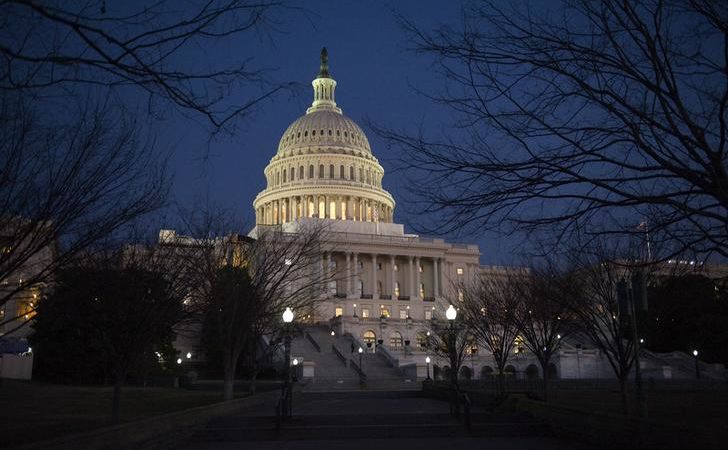Manal Corwin is the national leader of the International Tax practice of KPMG LLP (U.S.) and principal in charge of International Tax Policy in the firm’s Washington National Tax practice. In addition, she leads KPMG’s Global BEPS network.
Earlier in her career, Ms. Corwin served as deputy assistant secretary for International Tax Affairs in the Office of Tax Policy at the U.S. Department of the Treasury. While at Treasury, Corwin served as U.S. delegate and vice chair to the OECD’s Committee on Fiscal Affairs and was actively engaged in the early stages of the BEPS initiative.
Ms. Corwin answered the following questions for BEPS Global Currents on July 31, 2018 regarding the U.S. Tax Cuts and Jobs Act (TCJA):
Q: How are your clients generally responding to the TCJA?
A: Clients are just beginning to wrap their arms around the complexity of the new international tax provisions and how they will interact with each other and existing rules — particularly the U.S. foreign tax credit (FTC) regime. It is becoming apparent that modelling is essential both to ascertain the impact of these new rules on a multinational’s U.S. tax liability and to begin to assess the potential impact on U.S. and global operations.
Determining the base-line impact of the U.S. tax reform on a company’s effective tax rate in the absence of regulations – particularly in light of the number of unanswered questions in the legislation – is significantly more challenging than operating under the mature set of long-standing U.S. rules in place prior to the reform. Companies will be forced to make numerous decisions about reasonable approaches throughout the modeling exercise where no guidance is otherwise available. Consistently applying selected approaches will be important until U.S. guidance is issued.
Q: In what ways is the TCJA more complex than existing U.S. tax laws?
A: Everyone wanted a reduction of the U.S. corporate rate, which the TCJA delivered on. However, we did not get a simplification of the U.S. international tax rules. Instead, the following new interdependent regimes were introduced on top of existing laws: global intangible low-taxed income (GILTI); foreign-derived intangible income (FDII); and the base erosion and anti-abuse tax (BEAT). These regimes have separate calculations, which adds to the complexity of the TCJA.
The GILTI regime requires current inclusion of income that used to be eligible for deferral pre-tax reform. The determination of the GILTI inclusion involves the application of a series of complex rules. Moreover, while the income included as GILTI is eligible for a deduction that reduces the U.S. rate of tax on the income to 10.5%, a taxpayer might face limitations in claiming a credit for foreign taxes paid on the same income. This is because the U.S. limits the availability of credits for foreign taxes attributable to net foreign-source income determined under U.S. principles. Since a taxpayer must reduce foreign-source income by expenses incurred at the U.S. shareholder level, which the foreign jurisdiction does not take into account in determining taxable income, there is a mismatch between the base upon which U.S. versus foreign tax is imposed. This mismatch can limit a U.S. company’s ability to claim credit for all foreign taxes paid. Accordingly, without careful management, it is possible to owe residual U.S. tax on earnings of controlled foreign corporations (CFCs) already subject to a very high foreign tax rate.
Under the FDII regime, certain categories of income earned in the U.S. can qualify for a deduction that reduces the U.S. tax rate to 13.125%. Here again, the calculation of income eligible for the FDII deduction involves the application of a complex set of rules to determine which categories of income qualify and the amount of the available deduction. There are also potential interactions between the FDII and GILTI regimes.
Finally, a third regime, the BEAT, if triggered, has the effect of causing taxpayers to lose the benefit of deductions and tax credits. This can have a material impact on a taxpayer’s U.S. corporate tax liability.
Q: What impact is the TCJA having on your clients’ financial reporting?
A: The scope and speed of enactment of the TCJA meant that significant interpretive questions were left to U.S. regulations. As regulations are not expected until the end of the year, and there is currently a lack of specific guidance on unanswered questions, companies must make certain determinations regarding tax-related financial statement positions.
Q: What are the current hallmarks of U.S. international tax, as you see it?
A: Complexity, uncertainty, and instability.
I have already highlighted the complexity and uncertainty associated with the TCJA. Companies are also concerned about instability in three respects. First, there is concern that the U.S. rules might change again if the there is a shift in political control of Congress. Second, there is potential instability of a company’s effective tax rate from year-to-year based on inaccurate forecasts, transfer pricing adjustments, or other factors that are relevant to the determination of U.S. tax liability under the new rules. Finally, there is concern about the sustainability of certain TCJA rules in the face of global challenges. In particular, a number of countries have raised questions about whether the FDII regime is consistent with U.S. trade obligations under World Trade Organization (WTO) rules. Companies are, therefore, concerned that a potential successful challenge to the FDII by the WTO could lead to a repeal of the regime.
Q: Are your clients considering “checking the box” as a result of the TCJA?
A: There is no uniform approach to managing the various challenges under the TCJA. In certain cases, companies are electing to check-the-box to prevent the loss of foreign taxes or the benefit of qualified business asset investment (QBAI) in tested loss of CFCs, for purposes of calculating their GILTI inclusion. Checking-the-box might also mitigate the impact of the BEAT. In other cases, checked entities might have a detrimental impact on tax outcomes. Moreover, companies should evaluate whether transactions with checked entities trigger U.S. or foreign anti-hybrid rules.
Q: How are you generally calculating the cost of goods sold (COGS) under the BEAT?
A: This is a tax accounting question. Because there is no specific U.S. guidance on this issue under the BEAT rules, companies are taking a close look at existing U.S. tax rules to identify cost of goods sold (COGS) that can be excluded from the BEAT regime. These determinations may vary by industry.
Q: Do you have clients with foreign IP that are trying to onshore the IP in the U.S. due to the TCJA?
A: Determining where to locate IP is fact-dependent for each taxpayer. There are multiple considerations that impact the location of IP post-U.S. tax reform.
For companies with IP currently held abroad, the requirement to align functions of DEMPE (development, enhancement, maintenance, protection, and exploitation of intangibles) with the location of IP pursuant to BEPS Actions 8 to 10 – the more favorable onshore U.S. tax rate environment, the uncertainty regarding residual tax on GILTI income, and the possibility of receiving a step-up in basis on the transfer of their IP to the U.S – all weigh in favor of on-shoring IP to the U.S.
On the other hand, U.S. companies that have already aligned IP with DEMPE functions offshore, or who are able to transfer IP to another favorable tax jurisdiction, where it can be aligned with DEMPE functions, may be hesitant to onshore IP to the U.S., for fear that the favorable FDII regime might not survive a WTO challenge in the long term. Either way, companies should model options and evaluate the short-term and long-term impacts of onshoring IP to the U.S.
Q: Which BEPS-type items may have the most impact on your clients following U.S. tax reform?
A: The anti-hybrid rules adopted in the TCJA resemble, but are not identical to, the BEPS anti-hybrid recommendations that other jurisdictions have adopted. Companies will have to monitor the potential clash of the various rules on their structures.
In addition, the BEPS Action 5 recommendations regarding harmful preferential regimes might be deployed by some jurisdictions to neutralize the benefits of the FDII regime. For example, Germany has recently introduced rules that target non-compliant patent box regimes. These rules deny deductions for royalty payments to IP regimes that are considered ““non-compliant” under BEPS Action 5. To the extent Germany views a payment to the U.S. that benefits from the FDII deduction as within the scope of this new rule, it might deny the deduction in Germany, thereby raising the company’s global effective tax rate.
Finally, as discussed above, the requirement that DEMPE and risk-control functions be located with IP pursuant to BEPS Actions 8-10, as well as the more favorable U.S. tax rate environment, may impact decisions to onshore IP to the U.S.
These comments represent the views of the author only, and do not necessarily represent the views or professional advice of KPMG LLP.
The information contained herein is of a general nature and based on authorities that are subject to change. Applicability of the information to specific situations should be determined through consultation with your tax adviser.
KPMG LLP, the audit, tax and advisory firm (www.kpmg.com/us), is the independent U.S. member firm of KPMG International Cooperative (“KPMG International”). KPMG International’s independent member firms have 197,000 people in 154 countries.
Click here for more information on our BEPS research and technology solutions to address your immediate and ongoing needs.






